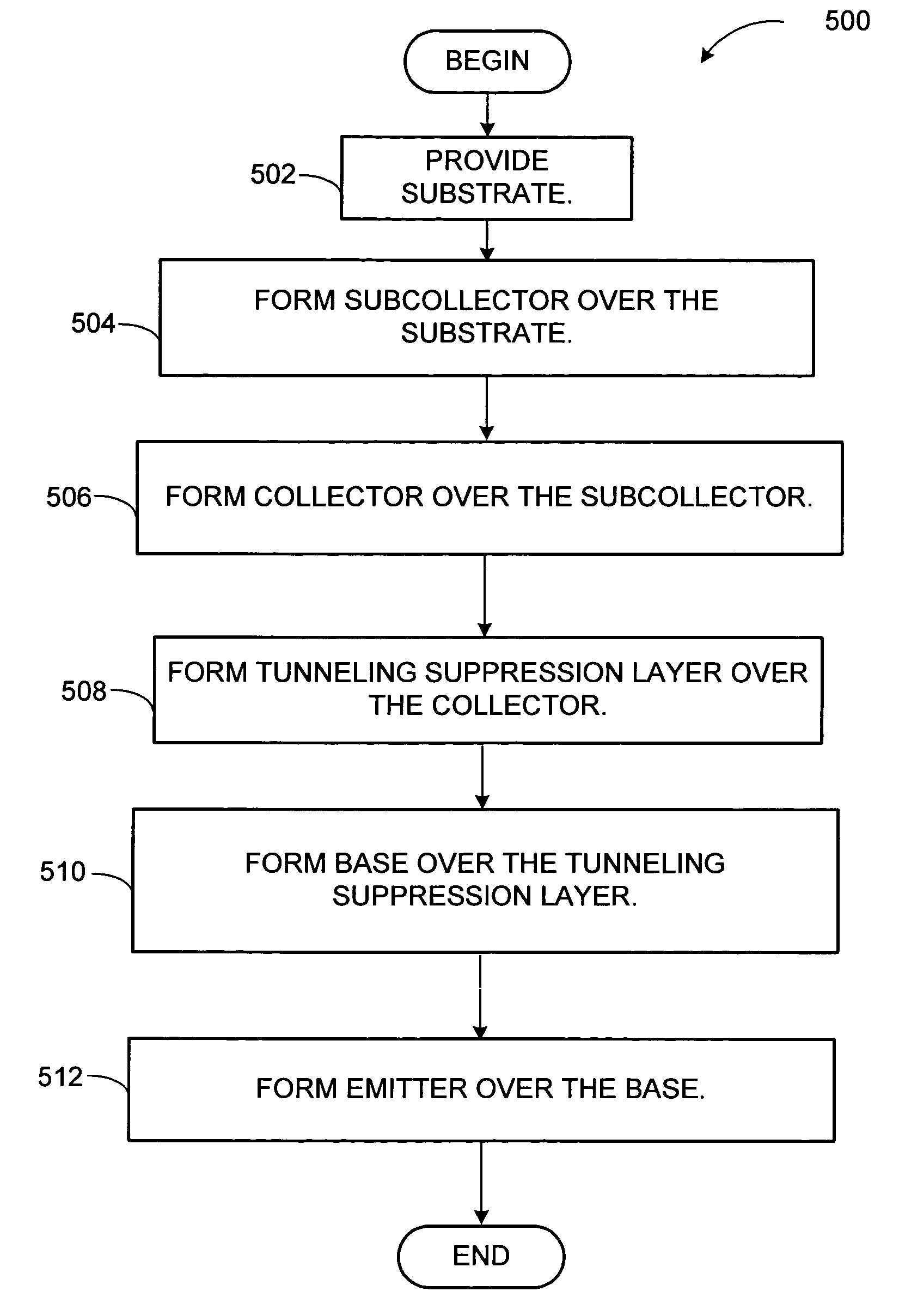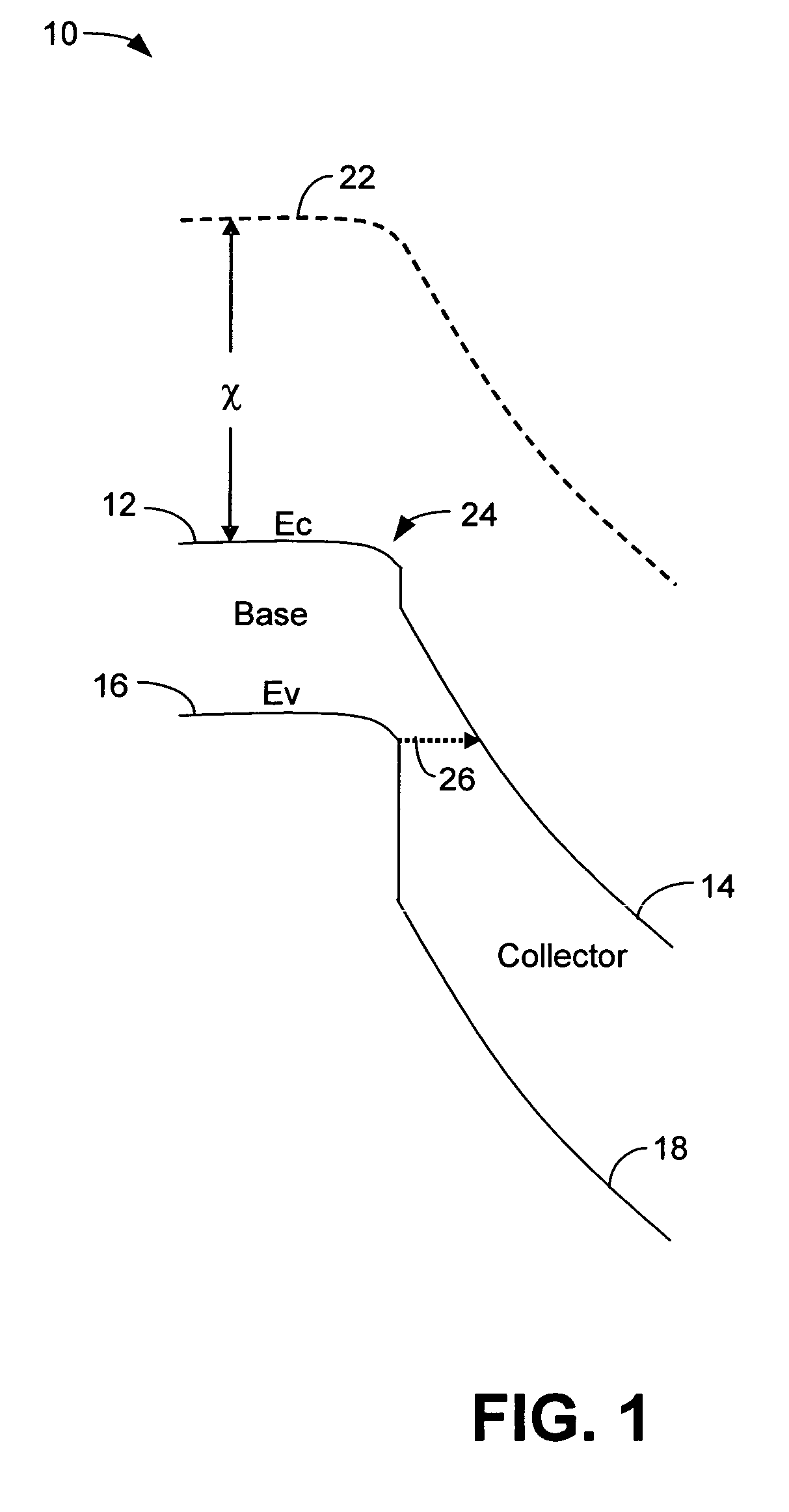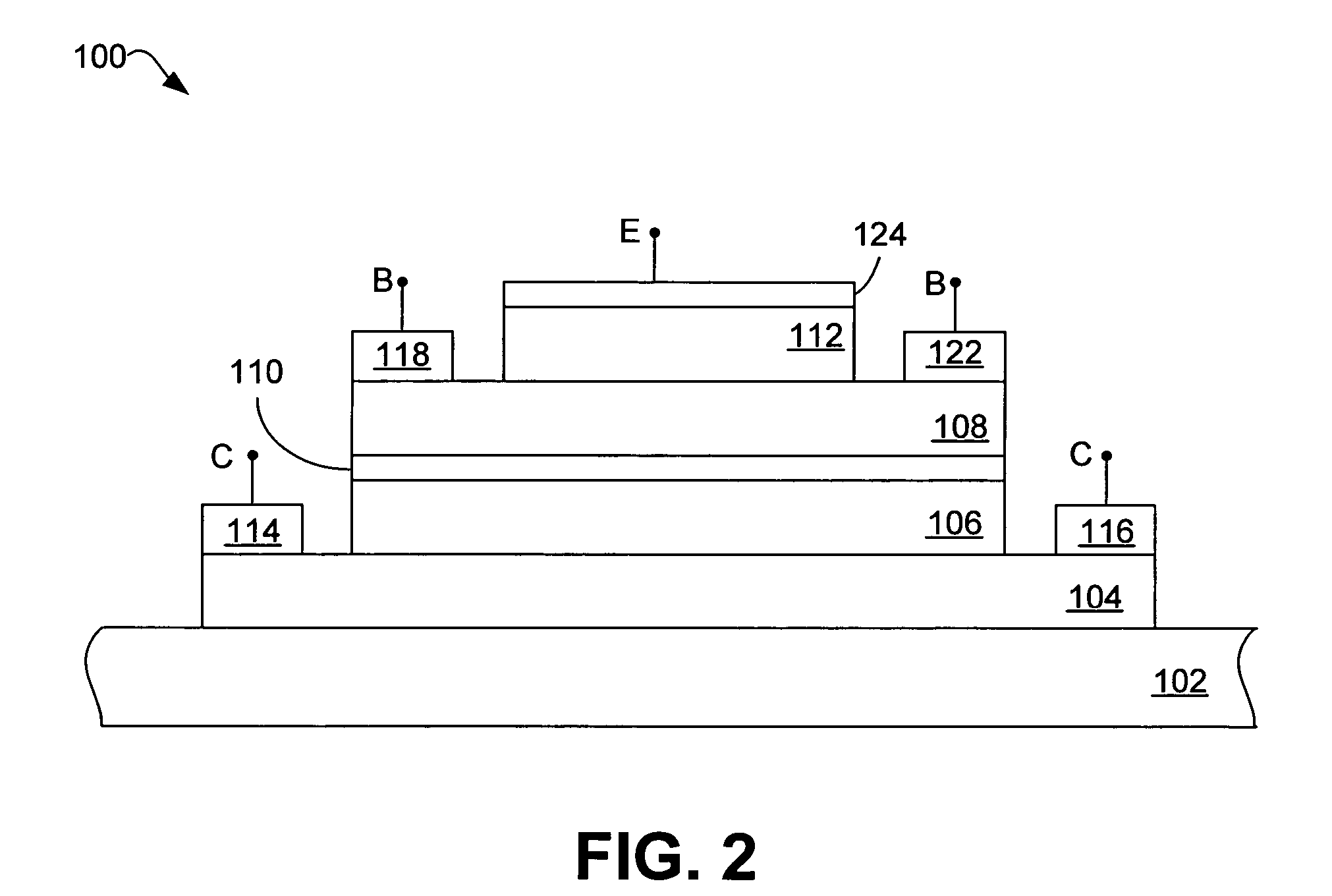Gallium arsenide antimonide (GaAsSB)/indium phosphide (InP) heterojunction bipolar transistor (HBT) having reduced tunneling probability
a bipolar transistor and heterojunction technology, applied in the field ofgallium arsenide antimonide (gaassb)/indium phosphide (inp) heterojunction bipolar transistor (hbt) having reduced tunneling probability, can solve the problem of insufficient breakdown voltage for a number of potential applications, and achieve the effect of increasing the breakdown voltage of an hbt and reducing the probability of electron tunneling
- Summary
- Abstract
- Description
- Claims
- Application Information
AI Technical Summary
Benefits of technology
Problems solved by technology
Method used
Image
Examples
Embodiment Construction
[0017]A band diagram 10 for the base-collector junction of an HBT having a GaAsSb base and an InP collector is shown in FIG. 1 and shows a type-II band lineup. The band diagram 10 plots electron energy against physical distance in the direction orthogonal to the plane of the layers of the device. The band diagram 10 shows the conduction band energy, Ec, (12 for the base and 14 for the collector) the valence band energy Ev, (16 for the base and 18 for the collector) and the vacuum level 22 under reverse bias. The vacuum level is a reference defining the energy of a free electron. The electron affinity, χ (chi), is the difference in energy between the vacuum level 22 and the conduction band energy, Ec, of a semiconductor. The electron affinity, χ, is the energy needed to free an electron present in the conduction band of a semiconductor. Since the vacuum level is continuous, the conduction band offset is the difference in the electron affinity between two semiconductors.
[0018]The band...
PUM
 Login to View More
Login to View More Abstract
Description
Claims
Application Information
 Login to View More
Login to View More - R&D
- Intellectual Property
- Life Sciences
- Materials
- Tech Scout
- Unparalleled Data Quality
- Higher Quality Content
- 60% Fewer Hallucinations
Browse by: Latest US Patents, China's latest patents, Technical Efficacy Thesaurus, Application Domain, Technology Topic, Popular Technical Reports.
© 2025 PatSnap. All rights reserved.Legal|Privacy policy|Modern Slavery Act Transparency Statement|Sitemap|About US| Contact US: help@patsnap.com



